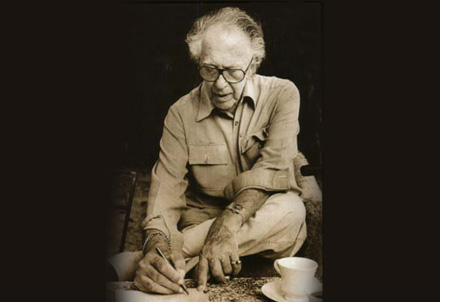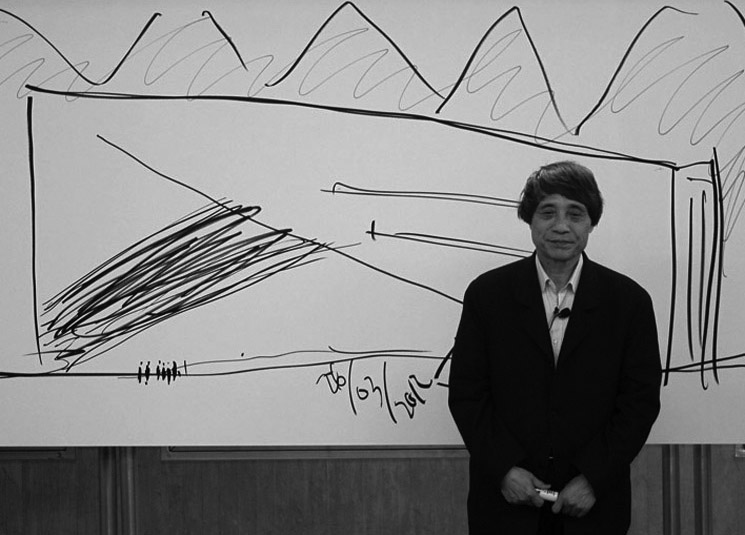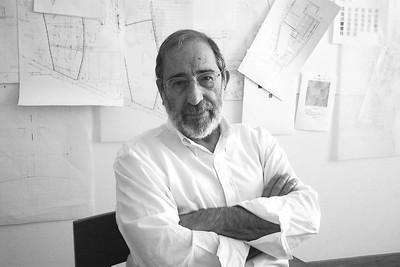Critical Regionalism in Architecture
Modernism tried to render all the regions in the same tone. Modernism was a style that had no prerequisite context. The ideology of a modern design fits in very well in any part of the world. Therefore, in a way, it also led to the fading away of local and cultural significance. This led to a movement of regional awakening. Architects around the globe came up with ideologies that encouraged the inclusion of regional features in the design. Rather than blindly accepting the parameters of modern architecture, architects tried to critically rethink the design scenario. This was the onset of Critical Regionalism in architecture.
The idea of critical regionalism was put forward by Architects utilizing a new form of regionally influenced design. Critical regionalism buildings co-related with the local environment and showcased cultural and regional features. They also had provisions designed to adapt to the local climate. Hence, Critical Regionalism in architecture was more of a promotion of the local and cultural value, rather than blindly accepting the preachings of modernism.
What is the importance of Critical Regionalism in Architecture?
What modernism introduced were just general guidelines for design. Cities around the globe began following these guidelines without any regional context. Everyone began designing mundane glass and steel structures and made evident use of concrete. However, it lacked a sense of the local environment. Architecture is about creating spaces that are comfortable and habitable to the users. What the society failed to understand is, a tall glass structure might do well in New York, considering the climate. However, is it feasible to erect the same glass structure in a tropical region or the Middle Eastern countries where the climate is opposite to that of the west?
In the process of establishing that “we are modern”, even the hot and arid regions around the world ignored the micro and macro-climate. The glass towers in this region then lead to more economical stress in the form of the money spent on cooling, keeping out the sun glare, and shading devices. Therefore, to tackle these issues, some Architects led to the process of regional awakening. They resorted to designing what is feasible regionally and fits in the micro and macro-climate. This also led to the establishment of cultural and regional features on an international level through the Critical regionalism buildings.
The pioneers of Critical Regionalism in Architecture:
Here are the crusaders of Critical regionalism in Architecture. These architects went on to design buildings of national importance with this approach. They also gave us living examples of how buildings are supposed to compliment the nature and culture of the locality. Let us have a look at their work and their inspirational ideologies
Geoffrey Bawa-Prioritizing Local Culture and Imagery:
The ‘Deshmanya’ title holder Ar. Geoffrey Bawa was one of the most influential architects of Sri Lanka. He led to the onset of a movement exploring the modern aspirations of the world and converting it into a design that resonates with the local fabric. He also designed the Sri Lankan Parliament Complex. This is one of the prime examples of critical regionalism in Sri Lankan Architecture. The structure followed a completely asymmetrical fashion. There was a use of the local style of floating copper roofs and also the predominant use of the color green. The Parliament complex stands as a building of national importance designed with regional attributes.

Another of his design, Steel Corporation Offices, and Housing, proved that administrative buildings need not always have a mundane corporate look. He designed this with sloping roofs that were a feature of Sri Lanka’s tropical climate. However, the walls featured precast concrete units and stained glass to filter direct light. This perfectly showcases an amalgamation of modern materials in local fashion. Therefore, this legacy by Bawa is also termed as Tropical modernism.
Notable Projects:
The Ratnasivaratnam House, The Kandalama Hotel, The Strathspey Estate Bungalow
Key Learnings:
Regional significance can be very well translated even in corporate buildings.
Raj Rewal- Amalgamation of modern and traditional concepts:
India’s post-colonial architecture cannot go without the mention of Architect Raj Rewal. His designs showcased modernism amalgamated with regional elements. Raj Rewal’s buildings gave us modern imagery, deep-rooted in regional influence. One of his noteworthy projects is the world’s first and largest span space frame structure, The Hall of Nations. It is a marvelous achievement in reinforced concrete. Moreover, his design of the Indian Science Academy, New Delhi introduced traditional concepts of the central courtyards and earthy color tones of the facade in the modern context. Whereas, through the design of the Ismaili Center, Lisbon, he established the use of modern materials of concrete and glass in traditional forms & geometries of Islamic architecture. Therefore, the Ismaili Center Lisbon remains Rewal’s most noteworthy contribution to Critical regionalism in architecture.
Notable Projects:
Asiad Games Village, Bio Port Sohna, National Centre for Biological Sciences.
Key Learnings:
Interchanging and innovative use of materials and design ideologies in modern as well as traditional contexts.
Ken Yeang- Strengthening traditional ecology with modern design:
The works of Architect Ken Yeang are highly inclined towards ecology. Moreover, the words Ken Yeang and sustainability seem like synonyms in the architectural world. He is also an influential ecologist and author from Malaysia. His designs focus on translating the theoretical eco architecture into reality. He has been the pioneer in bridging the gap between modern technology and traditional ecology.
One of the most influential amongst Ken Yeang buildings is the Menara Mesiniagain Malaysia. It has the features of a futuristic bioclimatic skyscraper, like the use of passive strategies for ventilation, daylighting, and solar energy concepts. However, it also facilitates vertical vegetation along the facade and has landscaped sky courts. Moreover, The Solaris Tower, Fusionopolis, Singapore is another amongst the famous Ken Yeang Buildings. We can also see the strong connection of nature and modern architecture here, through the vertical vegetation parks, diagonal light-shaft, and automated glass-louvers roof over the atrium.
Notable Projects:
National Library Singapore, Spire Edge Tower, DiGi Data Centre
Key Learnings:
Sustainability and traditional ecology are not restricted by the scale of the project.
Tadao Ando- Using nature as building elements:
Architect Tadao Ando is known to utilize simplistic features to create complex spaces. Ando also won the Pritzker prize in 1995. He is known for his ideology of bringing reforms through design and architecture. The Church of the Light and the Church on the Water are living examples of Tadao’s innovative and nature-rooted ideologies.

In the Church of the Light, he used the simplistic natural resource of light as a main element of the building. Moreover, the cross was cut out in the façade. The natural light that came in through this fenestration also acted as the central source of light in this design. One of the other noteworthy critical regionalism buildings by Ando is the Museum of Literature, Himeji. Here he curated a sense of play of ramped entry, the tiered water pools, and a minimalistic façade. Tadao Ando’s projects also explored the potential of concrete in the natural and traditional context.
Notable Projects:
Church on the Water, Rokko Housing, Japanese Pavillion, Meditation Space, Vitra Seminar House.
Key Learnings:
Complexity of a design lies in the use of simplistic forms. Nature is ought to be a part of the design.
Alvaro Siza – Architecture moulded in nature:
Alvaro Siza is a Portuguese architect who was one of the most celebrated architects of his generation. If you are not aware of his contribution to Critical Regionalism in Architecture, you surely need to dig deeper. The scale at which he infuses nature with architectural forms is simply commendable. His design ideology focuses on curating spaces in response to natural light and exposure to the sky. His working style is also referred to as ‘poetic modernism’. Siza’s work of Leca Swimming Pool Complex gave him international acclaim. It is still seen as a beautiful engagement between nature and architecture.

Notable Projects:
Leca swimming pool complex, Portuguese National Pavilion, Porto School of Architecture.
Key Learnings:
Designing in context to the local environment and natural ecology.
Conclusion:
Modernism prescribed a common design, whereas postmodernism challenged these prescriptions and resulted in a fusion of modern and artistic design. What challenged postmodernism was Critical regionalism in Architecture. However, it was not limited to aesthetics. It led to the wholesome development of design in modern as well as traditional context. Critical regionalism also gave a new perception of design. Its major role was to preserve the cultural and traditional influence, thereby making design region-specific and meaningful.
The movement of critical regionalism is a great piece of learning. While we might have an inclination to a certain style of design or material, the same may not fit in the local climate of cultural context. This is where these architects and their ideologies come to help. They show us how traditional and cultural values complement the design. They also showed us how to amalgamate modernism in a cultural context. Their designs stay as live examples of Critical Regionalism in Architecture.


One thought on “Critical Regionalism in Architecture”
Comments are closed.